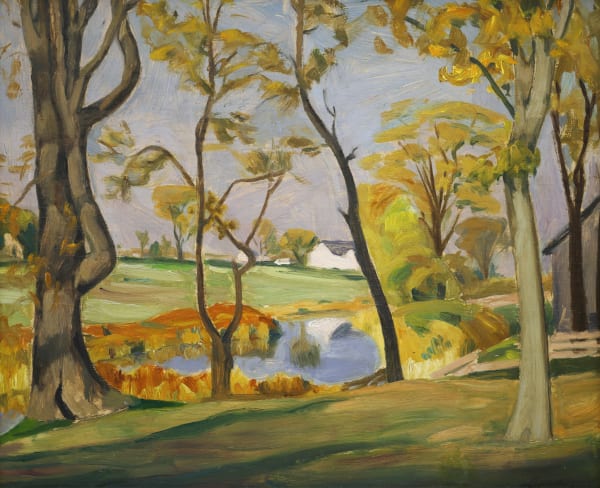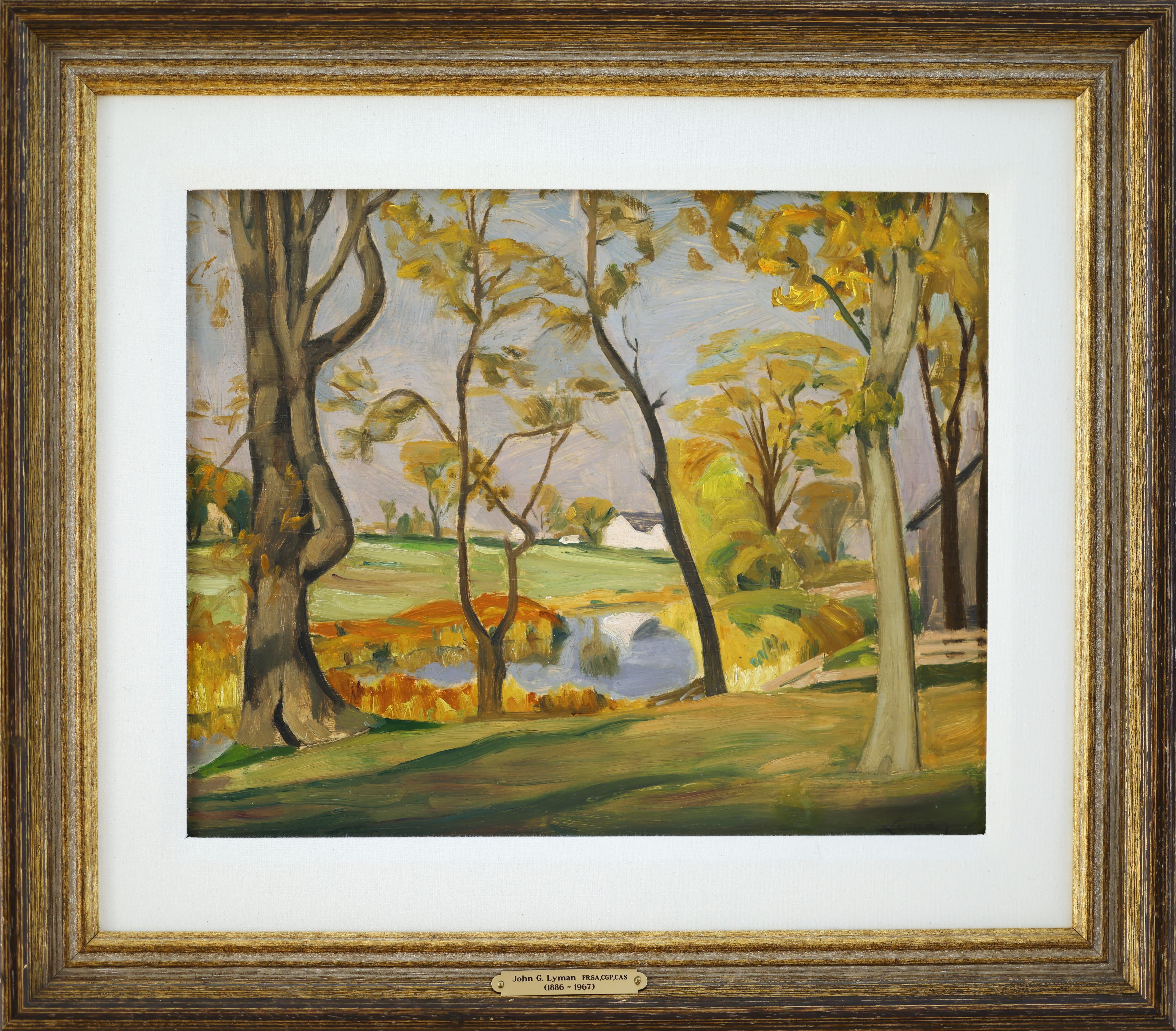


John Goodwin Lyman (Sept 29, 1886-May 26,1976), born in Biddeford, Maine, was a pioneering figure in Canadian art, whose journey from the conservative landscapes of his upbringing to the vibrant avant-garde of Paris and back again to Montreal shaped a career marked by both controversy and innovation.
 John Lyman; La Frenière
John Lyman; La Frenière
Born to American parents who later settled in Victoria, British Columbia, John Lyman's artistic sensibilities were profoundly influenced by his exposure to the School of Paris. In 1908, he embarked to Paris, where he studied at the prestigious Académie Julian under the tutelage of Jean-Paul Laurens. It was here that he forged a lasting friendship with fellow Canadian artist James Wilson Morrice. Subsequently, Lyman enrolled at the Académie Matisse, immersing himself in the revolutionary teachings of the iconic master, Henri Matisse, who would become a lifelong influence.
In 1910, Lyman married Corrine St. Pierre, embarking on a period of extensive travel throughout Europe, punctuated by exhibitions that garnered both acclaim and controversy. Despite his Fauvist-inspired works being met with disdain in his native Quebec, Lyman persisted, spending nearly three decades in exile across France, Spain, and North Africa.

John Goodwin Lyman; Dixie Bar, Paramaribo, Suriname
Upon his return to Montreal in 1931, Lyman sought to bridge the gap between European modernism and Canadian artistic sensibilities. He founded the Atelier, an art school under McGill University's auspices, and championed modern art through his writing and activism. His efforts culminated in the establishment of the Contemporary Art Society in 1939, further solidifying his legacy as a leading advocate for artistic innovation in Canada.
Throughout his later years, John Lyman continued to evolve as an artist, embracing elements of Automatism and abstraction while maintaining a distinctive emotional reserve in his work. Despite shifting artistic trends, his dedication to Matisse's aesthetic principles remained unwavering.
This website uses cookies
This site uses cookies to help make it more useful to you. Please contact us to find out more about our Cookie Policy.